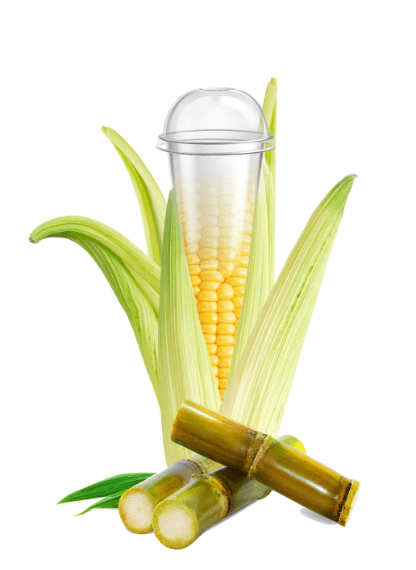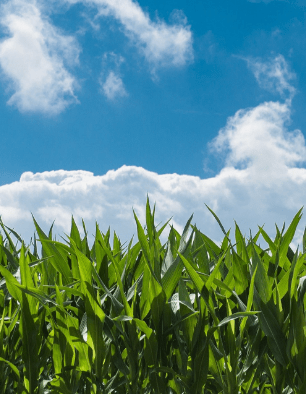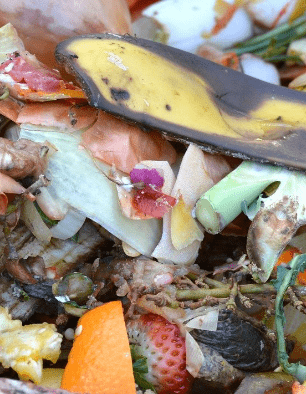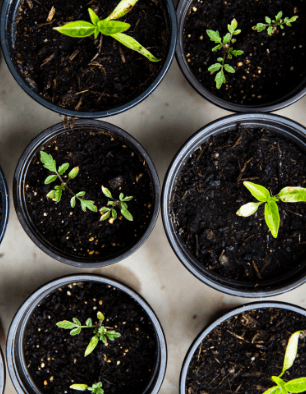What actually is bioplastic?
Bioplastic refers to two types of material: biosourced (derived from biomass) and biodegradable plastics (including compostable plastics), which may be derived from fossils ressources (petrochemical reactions).
1%
This is the proportion of bioplastics in global annual plastic production*. This figure will soon exceed 2%**.
Biodegradable and compostable bioplastics are subject to standards and must meet criteria related to non-toxicity in soil and the rate of biodegradation.
Innovating in the production of compostable bioplastics offers a complementary solution to recycling. It provides an environmentally friendly end-of-life option for plastics that aren’t easily recyclable, particularly short-lived products like packaging.
* Source: World plastics production 2021, Plastics Europe 2022
** Source: European Bioplastics, 2022
Unlimited cycle with raw material regeneration
Sugar cane or corn harvest provide starch, basic ingredient for biobased and biodegradable products.
Biobased and biodegradable materials are then used for multiple applications : bags, coffee pods, cups…
The product is then collected with the biowaste and sent for recycling, i.e. composting or methanization.
Ultimately, these processes enable these products to be returned to the soil in a quality way, thus contributing to a more environmentally-friendly end-of-life.

PLA + CARBIOS Active = Universal Composting
PLA is both bio-sourced and biodegradable; it is derived from renewable resources such as corn or sugar cane. It is not in competition with food for human consumption or animal feed. Today, the total production of plant-based bioplastics represents:
0.01%*
of the total surface area of agricultural land*
Even if bioplastic production were to increase a hundred-fold over the next few years, competition with agricultural land would be virtually non-existent and, on the contrary, would represent a significant opportunity for farmers.
The only downside is PLA’s limited compostability as it is only possible in industrial facilities. But that was before! Thanks to CARBIOS Active, Carbiolice’s latest innovation, PLA products become 100% compostable, even at room temperature !
* Source: European Bioplastics 2019

Biobased plastics are derived from raw materials of biological origin, such as plants or renewable resources. It's important to note that some biobased plastics, like bio-PET, may not be inherently biodegradable. Using the term "bioplastic" to describe these products made from biobased polymers can potentially lead to confusion between the origin of the materials and their end-of-life characteristics.

A plastic is deemed biodegradable when it can naturally decompose due to the activity of microorganisms such as bacteria, fungi, algae, etc., under favorable environmental conditions, which include factors like temperature, humidity, pH, light, and oxygen levels. It's crucial to emphasize that the term "biodegradable" does not assure that the plastic is derived from renewable materials (even though this is feasible). Likewise, plastics sourced from plant materials do not inherently possess biodegradable properties.

The concept of compostability in plastics is more specific than biodegradability. It pertains to materials capable of breaking down in the presence of organic waste under specified composting conditions, which may include factors like temperature, the presence of specific microorganisms, and more. Two standards are commonly used to classify plastics as "compostable": the NF EN 13432:2000 standard, which applies to plastics that can degrade under industrial composting conditions, and the NF T 51-800:2015 standard, which designates plastics suitable for home composting.



Even plastics difficultly recyclable can have an eco-responsible end-of-life.

By limiting new production of petroleum-based plastics through the use of compostable plastics derived from renewable resources, we can limit the environmental impact of this material.

Incorporating bioplastics into biowaste offers a new end-of-life solution for plastics that cannot always be recycled.

In this way, bioplastics become circular as they return to the earth without leaving any residue or toxicity (CO2 emitted during bioplastic production goes back to Earth with compost).

Combined with separate collection of biowastes, extra 20 to 30% of our bins content can be valued during end-of-life processes, giving a total of 50% of our domestic bins.

In this way, we are creating a virtuous circle around the life of a plastic product by helping manufacturers and consumers to adopt a more responsible, meaningful approach.
